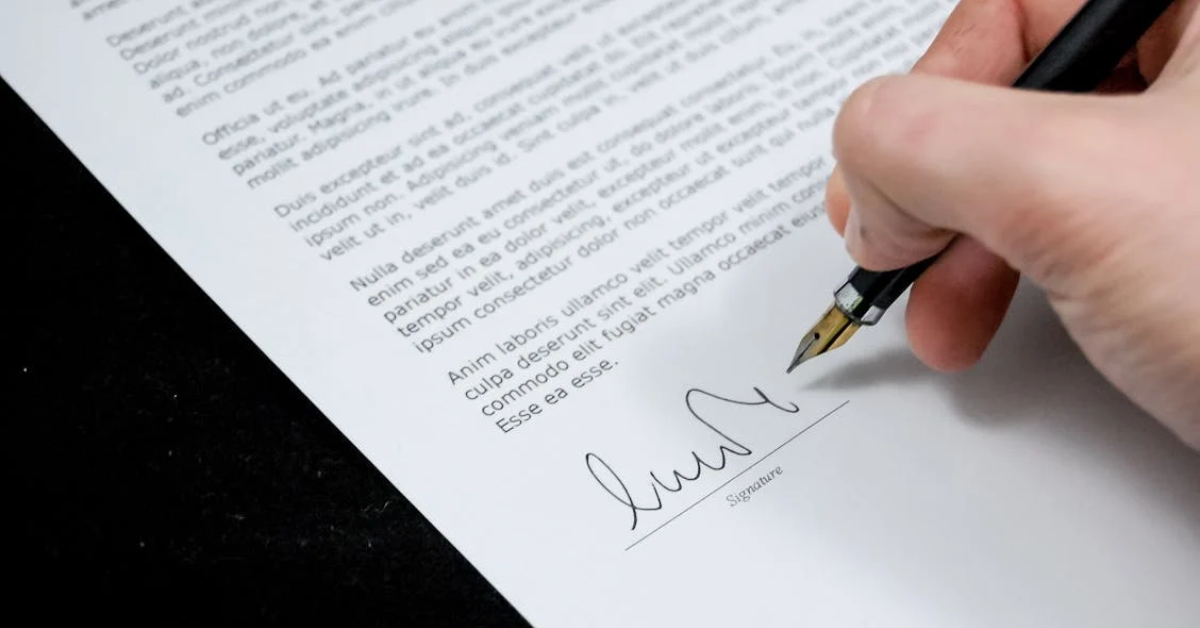In today’s digital age, email communication remains a fundamental aspect of professional correspondence. An email signature is more than just a sign-off—it’s an opportunity to leave a lasting impression and convey professionalism to your recipients. As we navigate through 2024, crafting a professional email signature is essential for individuals and businesses alike. In this guide, we’ll explore the steps to create a polished and professional signature that reflects your brand identity and leaves a positive impression on your recipients.
Also Read: Mastering Google Ads AI Essentials: Navigating the Latest Updates with Naveen Bansal
What is a Professional Email Signature?
A professional email signature is a personalized block of text or graphics that appears at the end of an email message. It typically includes the sender’s name, title, company name, contact information, and other relevant details.
Importance of a Professional Email Signature
A well-crafted email signature enhances your credibility, professionalism, and brand image. It serves as a digital business card, providing recipients with essential information about you or your company while reinforcing your brand identity.
Components of a Professional Email Signature
1. Name and Title
Include your full name and job title to identify yourself clearly to the recipient. Use a professional font and ensure that the text is legible and easy to read.
2. Company Name and Logo
Display the name of your company and incorporate its logo for brand recognition. Make sure the logo is resized appropriately to maintain visual balance within the signature.
3. Contact Information
Provide essential contact details such as your phone number, email address, and physical address (if applicable). This information enables recipients to reach out to you easily and reinforces your accessibility and professionalism.
4. Social Media Icons
Include links to your social media profiles, such as LinkedIn, Twitter, or Instagram, using corresponding icons. This allows recipients to connect with you on other platforms and expands your professional network.
Designing Your Professional Email Signature
1. Keep It Simple
Avoid cluttering your email signature with excessive information or design elements. Opt for a clean and minimalist layout that is visually appealing and easy to scan.
2. Use Consistent Branding
Ensure that your email signature aligns with your brand’s visual identity, including colors, fonts, and logo design.
3. Consider Mobile Responsiveness
Optimize your email signature for mobile devices to ensure that it displays correctly across different screen sizes. Use responsive design techniques to maintain readability and visual integrity on smartphones and tablets.
How do I create a business email signature?
1. Choose an Email Signature Generator
Several online tools and platforms offer email signature generators that streamline the process of creating a professional email signature. These tools provide customizable templates and allow you to input your information and design preferences.
2. Customize Your Signature
Personalize your email signature by adding your name, title, company details, contact information, and social media links. Adjust the layout, font styles, and colors to match your branding preferences.
3. Preview and Test
Before finalizing your email signature, preview it to ensure that all elements are correctly displayed and aligned. Test the signature across various email clients and devices to verify its compatibility and responsiveness.
Implementing Your Professional Email Signature
1. Configure Your Email Client
Once you’ve created your email signature, configure it within your email client settings. Most email clients, such as Gmail, Outlook, and Apple Mail, allow you to input your signature in the settings menu.
2. Use Wisely and Consistently
Apply your professional email signature to all outgoing email correspondence consistently. Whether sending personal emails or business communications, your email signature should be included to maintain professionalism and brand consistency. Keeping your email signature current ensures accuracy and relevance.
What are the email signature trends in 2024?
Interactive Elements: Email signatures now incorporate interactive elements like clickable buttons or banners, allowing recipients to engage directly with the sender’s content, such as scheduling a meeting or visiting a website.
Personalization: Personalized email signatures, tailored to specific recipients or occasions, are gaining popularity. This customization may include dynamic content, such as the recipient’s name or recent interaction history.
Visual Enhancements: Signatures feature visually appealing elements like animated GIFs, subtle animations, or video snippets, adding a dynamic touch to the email footer while maintaining professionalism.
Minimalistic Design: Minimalism continues to be a prevalent trend, with email signatures opting for clean layouts, simple typography, and limited color palettes to convey professionalism and ensure readability across devices.
Social Proof Integration: Incorporating social proof elements such as client testimonials, awards, or certifications into email signatures helps build trust and credibility with recipients, reinforcing the sender’s expertise or achievements.
Dark Mode Compatibility: With the increasing adoption of dark mode in email clients, email signatures are designed to maintain visibility and readability in both light and dark themes, ensuring a consistent user experience.
Accessibility Features: Email signatures are being optimized for accessibility, with considerations for users with visual impairments. This includes using high-contrast color schemes, legible fonts, and alt text for images.
Crafting a professional email signature is paramount in today’s digital landscape. As highlighted throughout this guide, an email signature serves as more than just a sign-off; it’s a reflection of your credibility, professionalism, and brand identity. By incorporating essential components such as your name, title, company details, and contact information, you provide recipients with pertinent details while reinforcing your accessibility and brand recognition.

